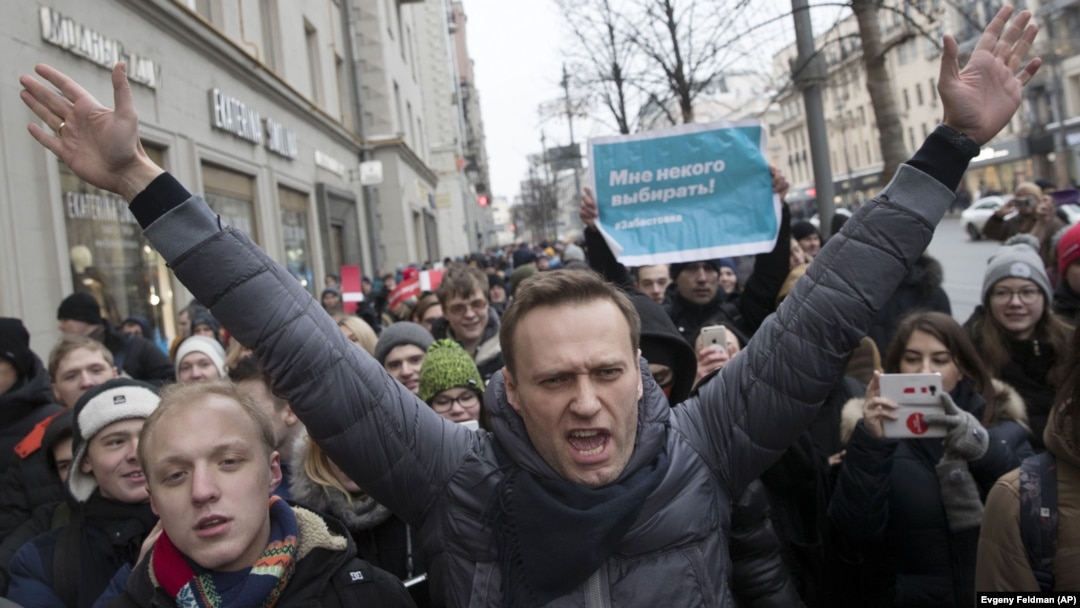MOSCOW -- As Aleksei Navalny's followers came out in mass protests last March and June, the police were quick to pull the plug on the opposition leader's most potent tool for spreading his message: his YouTube channel.
His activists hoped to use it to air rolling live coverage of their nationwide protests on Navalny Live, seeking to bypass an effective state media ban. But they were stopped in their tracks: police raided the studios, cut electricity, detained activists, and seized their equipment.
On January 28, however, as thousands of protesters countrywide heeded Navalny's call to rally for an election boycott, the authorities appeared to fail to shut it down. What's more, it was not for want of trying -- police appeared to fail to locate the studio.
As protest coverage began early on January 28, Navalny activists were interspersing live coverage of the protests with news segments hosted by two activists and recorded in the offices of Navalny’s Anticorruption Foundation in a business center in southeast Moscow.
Shortly after it began, however, police raided the office and evacuated the entire building, claiming an apparent bomb threat, and forced their way through the door of the office with what activists described as a special drill known as a"bolgarka."
Two news presenters -- their poker faces giving way to a smirk -- continued to present the news over the grinding din of the drill cutting through the door of their studio. The newscast was swiftly brought to an end.
The broadcast, however, continued at another studio throughout the day, lasting approximately 14 hours.
Vladislav, a Navalny activist, wrote on Twitter that police had seized equipment at the Anticorruption Foundation including a streaming computer and a router server. He said they had tried to work out the location of the other studio by sifting through equipment they found there.
"They turned the network equipment upside-down. Obviously they were looking for where the broadcast was coming from, the funny suckers."
New Media Assault
The live stream at the time of writing had garnered 1.37 million views -- an illustration of Navalny's strong foothold in new media that also allows him to reach viewers directly, while cutting out traditional media.
"I don't want to offend anyone, but judging by YouTube, 47,000 people are watching Navalny.Live, and 7,000 are watching [independent Moscow-based] TV Rain," said Fyodor Krashenninikov, an opposition-minded political consultant based in Yekaterinburg. "I raise this to show how new media are destroying old broadcasting forms."
Leonid Volkov, Navalny's election campaign manager, said the fact they had managed to conceal the studios from the police demonstrated the failings of the SORM system used for telecommunications surveillance by the authorities and new legislation promoted by lawmaker Irina Yarovaya that grants authorities sweeping surveillance powers.
"This shows once again how pointless all these SORMs, these Yarovaya laws are, and so on," he wrote in a post on Facebook, while also hailing YouTube live stream as a powerful tool for reaching supporters.
"The stream already has a million watches and was at the top on YouTube for several hours -- this is in the first instance a most powerful instrument for campaigning and informing, the video will be watched by millions."




